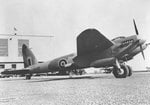pointedeflèche
Recruit
- 3
- Apr 6, 2006
Hello,
Can anyone explain me the difference between resin lights and navigation lights? Was the Mosquito FB Mark VI equiped with resin light(s)? Where precisely on the Mosquito FB Mark VI were resin light(s) fixed (fuselage, wings, tail)?
Best regards,
Dirk
Can anyone explain me the difference between resin lights and navigation lights? Was the Mosquito FB Mark VI equiped with resin light(s)? Where precisely on the Mosquito FB Mark VI were resin light(s) fixed (fuselage, wings, tail)?
Best regards,
Dirk








